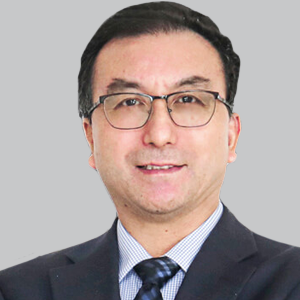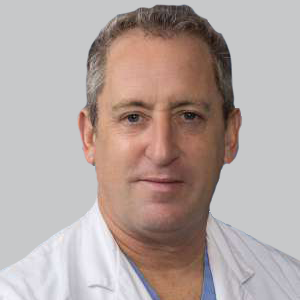Article
NeuroVoices: George Small, MD, on the Improved State of Myasthenia Gravis Care
Author(s):
The adult neurologist at Allegheny Health Network provided perspective on why there’s never been a better time to treat patients with myasthenia gravis.
George Small, MD

Since it was first discovered in the early 1900s, the prevalence of myasthenia gravis (MG) has increased, while mortality has declined due to the development of effective treatments. The first agents to treat the autoimmune disorder were physostigmine and neostigmine, followed by the first thymectomy in 1936. MG, a rare long-term condition, commonly affects the muscles that control eyes, facial expressions, chewing, swallowing, and speaking. It can affect people of any age, typically starting in women under 40 years and men over the age of 60.
For MG and many other neuromuscular conditions, the treatment landscape was further changed when corticosteroids and plasma exchange were introduced. The treatment toolbox continued to be rounded when therapies such as azathioprine in 1976, cyclophosphamide in 1981, and intravenous immunoglobulin in 1984, were approved. In the past 2 decades, there have been several other advances, which is why George Small, MD, believes that there is currently no better time to live with the disease.
Small, an adult neurologist at Allegheny Health Network (AHN), sat down as part of a new NeuroVoices to discuss the state of MG care, the reasons for improved success, and the way patients are treated today. He provided insight on some of the notable approvals, personal experience with these new therapies, and whether patient treatment options differ based on level of disability.
NeurologyLive®: How would you currently assess the state of care for these patients? Which areas do we excel at the most in providing care?
George Small, MD; I just wrote a piece for an internal publication called Brainwaves which is a publication of the Neuroscience Institute at AHN. I tried to write it in a friendly, light manner because I think the target audience for that are patients and their families. I started with a phrase that may seem disconcerting: “there's never been a better time on this planet to have myasthenia gravis than now.” Which sounds a little odd, since it is a chronic disease, since no one has ever cured of it. The definition of cure that we use is minimal manifestations disease. It's a disease that causes potentially disabling weakness particularly of muscles at the neck or above the neck with double vision and/or swallowing or speech problems. It could get bad enough that it causes breathing problems enough for people to be on ventilators. It's an autoimmune disease. It's the most common autoimmune disease in neurology. Just like you think of Lupus or rheumatoid arthritis and so forth, it's treated with some of the similar drugs.
How is the condition managed?
About 80% of patients can be treated with simple therapy with pills. They see their doctor occasionally, their symptoms are managed, if not 100% perfect, except to the point where they could carry out their activities of daily living. Living a normal life, but sort of knowing they have the problem. There is a good 20% however, who will occasionally go through bouts where they might not be able to walk, they might choke—which is dangerous—and they might require mechanical ventilation. A distinct minimum of people will go on to require a chronic ventilatory assistance or have breathing problems. I like to differentiate it from ALS for which there is still a tremendous amount of research. I would never say this is the best time in the world to have ALS, that is not the right way to describe it. Myasthenia gravis should not cause the death of anybody. Myasthenia gravis is managed about 80% of the time and can be handled with some pills and doctor visits here and there. People keep an eye on warning signs about breathing and swallowing, go to their medical provider if they have any worsening symptoms in that sphere, and need to wear a medical badge. Because it's not the most common disease in the world, it's considered an orphan disease.
What do the treatment options look like?
The landscape of myasthenia treatment has exploded since about 2018, approximately, when drugs called complement inhibitors drugs first got approved. That drugs name is Soliris, which is the trade name, and eculizumab, which is the generic name. It has other uses in medicine for certain kidney diseases that are rare, and it is FDA-approved for adult patients with generalized myasthenia gravis. That is not myasthenia gravis that just affects the eyes, but other parts of the body. We have experience with that [drug] here AHN, with myself and my partners using it. It's administered every two weeks as an intravenous. There are almost no side effects during the treatment. A patient requires it every two weeks though, and technically, its lifetime, although it doesn't have to be. The drug company that produces it has come out with another drug called Ultomiris, which is a long-acting version of the Soliris, so to speak, and requires infusions every eight weeks. We dosed our first patient with it in the last few weeks, and it got approved in May.
The short acting version was about 2018, and the longer acting version in 2022. Between the two [approvals], in December 2021, another drug called efgartigimod or Vyvgart came out. This is also an intravenous drug that's administered in cycles of once a week for four weeks, and then the doctor decides whether other cycles are needed. Many of these drugs are without side effects during administration, and I’ve been very happy with the results from both medications. These medications have all come out within several years of one another. In a sense, we’re blessed to have a community of doctors here at Allegheny General Hospital, particularly myself, interested in treating myasthenia gravis, because we happen to have collected 200 to 300 patients with this disorder, which is a lot of patients for an orphan disease.
In tandem with the Myasthenia Gravis Association of Western Pennsylvania—which had had a management services agreement with Allegheny Health System and had a clinic where they participated, which has since dissolved—but the organization still exists as an information organization. There's a telephone number that's associated with those individuals who are lay people, but who know about MG. They have a loose association with the National Myasthenia Gravis Foundation of America, of which I'm a board member. It's just the right time to come to Allegheny Health System if you happen to have this disorder, because of our experience. I've had 30 years’ experience treating myasthenia gravis here at AHN with other drugs in the beginning, frequently steroids, which are used for many other disorders that are rheumatologic.
We have the intensive care capabilities if people go south and have problems breathing, which is a minority of patients. We also have the expertise in the office with nurses and support staff for proper follow up and support of these patients. It's a good time to have expertise in MG because we're putting it to good use and providing it to our patients immediately. The horizon of doctors with neuromuscular disease experience has dwindled in western Pennsylvania. Several people at other hospitals in Pittsburgh have lost their neuromuscular clinicians—they've either retired or moved away, and there hasn't been a resupply of them. The fact that Dr. [Sandeep] Rana, MD, who runs our ALS clinic and our residency program, and me, are highly skilled and experts in treating myasthenia gravis, we're ready to go at AHN. We are treating people with state-of-the-art therapies, and we have state of the art support systems for them in these challenging times.
Transcript edited for clarity. Click here for more NeuroVoices.





